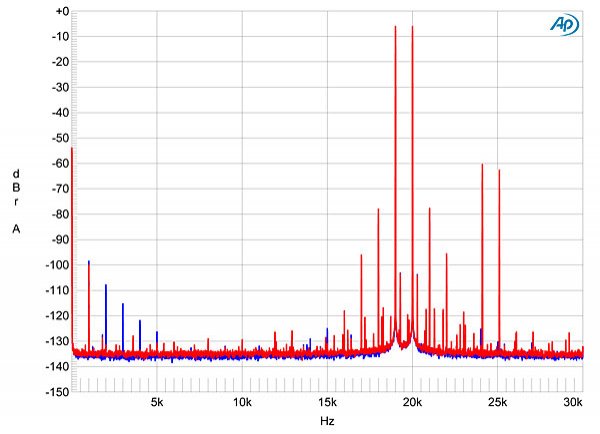Yes, running through Audio Diffmaker shows an offset of 13.53usec between Arny's 24/96 & the downsampled tracks. This is the equivalent of about half a sample - I doubt that it's audible although I do know that the just noticeable Interaural time difference is around 4usecs. But what we're talking about here is a shift of both stereo channels by 13.53usecs, not shifting one of the stereo channels.
I'm confused here about what files you are referencing - I thought the AVS files were ArnyK's files, no?
BTW, be careful with AudioDiffmaker - it seems to have some problems:
- it seemingly aligns the two files getting rid of the offset between them but introduces some shift anomaly in the first 0.177secs of the aligned file. This causes a reduced reported null value in Diffmaker.
- I brought the aligned file (16/44) from Diffmaker into Audition, inverted it & nulled it against the original 24/96 file. What should be seen is a good null for all frequencies up to 22K but you don't. What you see in the first 0.177secs is a bad null fluctuating -60dB, -70dB pretty much jumping all over as you move the pointer into the file & look at the frequency analysis plot. If you select the whole file & scan it for freq plot, you get about the same null figure as Diffmaker reports, -80dB. However, if you skip the first 0.177secs & scan the rest of the file you get a much better null of about -100 or -110dB.
- so my conclusion is that if there is an offset between files, Diffmaker makes a mess of aligning it which results in a lower null.
- one other thing is that there seems to be timing drift between the files which if not turned on in Diffmaker gives a much worse null of -30dB or so
Yes, I am aware of Diffmaker issues. So much so I never use it without confirming the info in at least one other way. In fact I didn't use diffmaker for these files yet. Dumped the jangling keys files into Audacity and lined up the nearest bits. What I found was the more downsampling done the more difference in the alignment (in this case to the nearest bit). It was more than one sample it was several samples, and I think in one case several dozen. Now in addition to that perhaps once files are aligned Diffmaker also found an additional sub-sample time difference.
When I said Arny's file nulled better it was the -100db or so null I was referring to. The other files (musical AVS files) even when lined up to the nearest bit don't null that well, and clearly show some timing drift from beginning to end. Which makes me think they have been thru an extra AD/DA loop. If you took the higher resolution file and downsampled I don't see where you would get timing drift. And you should get much better nulling at the lower frequencies.
So Amirm's comments about such testing are not changed by this. When so many fail an ABX and he passes it with large enough sample numbers as he has it shows not surprisingly that some hear better than others in some ways. But also there is no night and day difference. Plenty of us have some other tests we would like to see Amirm do of course. The problem being he is the only one who has consistently made this discernment.
It would mean even more if he can do this with files with a better cleaner provenance. I don't know what SRC Arny or the AVS files were used with, but some much cleaner ones seem to be available. I believe Amirm mentioned doing the jangling keys test in the past. So maybe he is just hearing something different most of the rest of us miss. Would be nice to figure out what. It certainly is very interesting.







